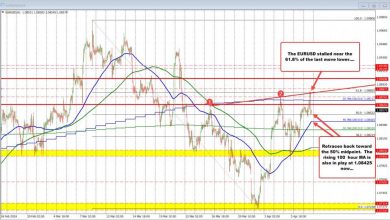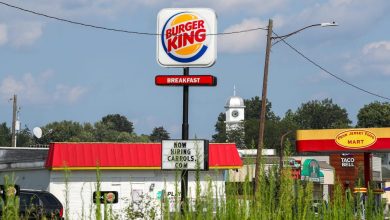China’s economic recovery diverges as industrial production rises and retail sales lag

Stay informed with free updates
Simply register at Chinese economy myFT Digest – delivered straight to your inbox.
China’s industrial production rose more than expected last month, but retail sales rose more slowly, a sign that weak consumer confidence was weighing on the recovery of the world’s second-largest economy.
Industrial production rose 6.7 percent year-on-year in April, official data from the National Bureau of Statistics showed Friday, beating forecasts of 5.5 percent by economists surveyed by Bloomberg and 4.5 percent. in March.
However, retail sales grew just 2.3 percent from a year earlier, well below analysts’ forecasts of 3.7 percent and down from growth of 3.1 percent. percent in March, indicating that authorities will need to step up efforts to boost domestic consumption.
China’s economy has shown mixed signs of recovery in recent months, with a return to export growth in April but a domestic climate gripped by a deep recession in the real estate sector.
The government also signaled it was ready to step up its stimulus efforts, with the People’s Bank of China starting to sell 1 billion yuan ($140 billion) worth of ultra-long bonds on Friday. Ahead of the sale, a government adviser said the bonds were aimed at “fully realizing the crucial role of government investment in supporting economic growth”.
China’s government, the State Council, also announced it would hold a meeting Friday afternoon to resolve issues in the housing sector, which has been suffering a slowdown for years despite numerous initiatives to support indebted real estate developers.
China’s benchmark CSI 300 index of stocks listed in Shanghai and Shenzhen edged down 0.2 percent, while the Hang Seng Mainland Properties index, a basket of Hong Kong-listed developers, lost as much as 0. .9 percent before stabilizing at an increase of 0.4 percent. hundred.
Chinese policymakers are increasingly counting on investment in manufacturing to offset lagging growth in other sectors and ease pressure on a struggling real estate market and heavily indebted local governments. High-tech industrial manufacturing was a bright spot in the April data release, growing 11.3 percent from a year earlier.
But industrial policy is fueling trade tensions with the United States and the EU, China’s main export markets, which have accused Beijing of pursuing unfair trade practices by stoking overcapacity and dumping excess products to low prices in its markets.
US President Joe Biden sharply increased tariffs this week on $18 billion in Chinese imports, ranging from electric vehicles to solar cells, in a pre-election effort to protect domestic jobs. The EU has also opened anti-subsidy investigations into China’s electric vehicle, wind turbine and solar panel sectors.
China has warned it will respond “resolutely” to US tariffs and accused Washington of violating World Trade Organization rules.
Auto production climbed 16.3 percent in April from a year earlier, but sales fell 5.6 percent, data that “could add fuel to the fire” of accusations of Chinese overcapacity, said Lynn Song, chief economist for Greater China at ING. He added that consumption growth would “likely remain moderate” this year “as consumer confidence remains sluggish.”
In other data released on Friday, the NBS said property prices in so-called first-tier cities fell 2.5 percent year-on-year in April. Prices also fell from the previous month, down 0.6 percent, a drop of 0.5 percentage points from March.
At the same time, investment in fixed assets grew 4.2 percent year-on-year in the January-April period, behind a Bloomberg analyst poll’s forecast of 4.6 percent growth. cent and an increase of 4.5 percent in January-March.
Beijing is trying to diversify into developing and non-Western markets, including investing in high-tech products that directly compete with those in the EU and the United States.
Russian President Vladimir Putin was in Beijing this week for a two-day state visit, during which discussions were held on trade, investment, defense and the war in Ukraine.
News Source : www.ft.com
Gn bussni





